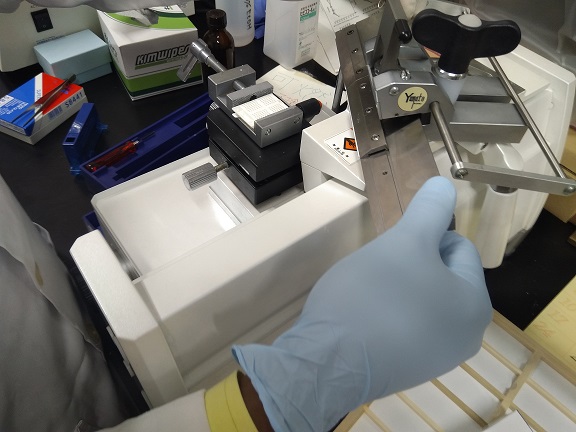Statistics is a branch of mathematics that is concerned with the proper method of collecting, organizing, presenting, analyzing and interpretation of numerical data. It affords scientists (especially the epidemiologists) the knowledge of making good use of numbers (data) in their research undertakings.
In statistics, data can be classified into two types: Primary data and Secondary data.
Primary data are data that an investigator (in this case, an epidemiologist) collects by himself or his co-worker directly from the units of enquiry and, such data may be published or may not be published.
Secondary data are figures which the investigator does not create by himself but which he collects from other kept records or published data such as hospital registers, data from population census, journals or books. The collection of data by an epidemiologist can either be by direct observation, use of personal interviews, population sampling, or by the use of questionnaires.
Because epidemiological data can vary from time to time, place to place, person to person, institution to institution, country to country, and even experimental trials to trials and so on, the understanding of statistics is therefore invaluable to the discipline of epidemiology for the reason that such knowledge will enable epidemiologists and other public health workers to predict, estimate and make sustainable decisions from collected and analyzed health/disease-related data for a better health of the general population.
Numbers (or data) and time therefore, are important tools for the successful implementation of any epidemiological study. The frequency at which a given infection/disease emerge and spread in a given population, their morbidity and mortality rate as well as number of susceptible members of the community can only be effectively determined and measured by the application of statistics.
In epidemiology, the measures of occurrence or episode of an infection or disease is usually expressed as a fraction (which can either be a ratio or percentage) which can be regarded to as a rate because a time period is often specified and, in this case; the denominator of the fraction is the number of persons at risk (i.e. the individuals in whom the disease or infection could have affected) while the numerator of the fraction is usually taken to be the number of persons that the disease or infection actually affected. In the scenario of an infection or disease outbreak, rates can often be expressed or stated as per 1,000 persons, per 100, per 100,000 or per 10,000 persons depending on the burden and severity of the disease or infection being monitored in a particular population at any given time.
The results of such statistical procedures in epidemiological studies helps public health workers and other health policy makers to better channel health-care needs and other interventional measures towards to containment of an infection/disease within a specified population at a given time. In addition, inferences from statistical analysis help a researcher to evaluate and test a hypothesis in order to decipher whether or not the data collected are consistent with the hypothesis being investigated.
References
Aschengrau A and Seage G.R (2013). Essentials of Epidemiology in Public Health. Third edition. Jones and Bartleh Learning,
Aschengrau, A., & G. R. Seage III. (2009). Essentials of Epidemiology in Public Health. Boston: Jones and Bartlett Publishers.
Bonita R., Beaglehole R., Kjellström T (2006). Basic epidemiology. 2nd edition. World Health Organization. Pp. 1-226.
Brooks G.F., Butel J.S and Morse S.A (2004). Medical Microbiology, 23rd edition. McGraw Hill Publishers. USA.
Castillo-Salgado C (2010). Trends and directions of global public health surveillance. Epidemiol Rev, 32:93–109.
Centers for Disease Control and National Institutes of Health (1999). Biosafety in Microbiological and Biomedical Laboratories, 4th edn, Washington DC: CDC.
Gordis L (2013). Epidemiology. Fifth edition. Saunders Publishers, USA.
Guillemin J (2006). Scientists and the history of biological weapons. European Molecular Biology Organization (EMBO) Reports, Vol 7, Special Issue: S45-S49.
Halliday JE, Meredith AL, Knobel DL, Shaw DJ, Bronsvoort BMC, Cleaveland S (2007). A framework for evaluating animals as sentinels for infectious disease surveillance. J R Soc Interface, 4:973–984.
Lucas A.O and Gilles H.M (2003). Short Textbook of Public Health Medicine for the tropics. Fourth edition. Hodder Arnold Publication, UK.
MacMahon B., Trichopoulos D (1996). Epidemiology Principles and Methods. 2nd ed. Boston, MA: Little, Brown and Company. USA.
Nelson K.E and Williams C (2013). Infectious Disease Epidemiology: Theory and Practice. Third edition. Jones and Bartleh Learning.
Porta M (2008). A dictionary of epidemiology. 5th edition. New York: Oxford University Press.
Rothman K.J and Greenland S (1998). Modern epidemiology, 2nd edition. Philadelphia: Lippincott-Raven.
Rothman K.J, Greenland S and Lash T.L (2011). Modern Epidemiology. Third edition. Lippincott Williams and Wilkins, Philadelphia, PA, USA.
Discover more from Microbiology Class
Subscribe to get the latest posts sent to your email.





